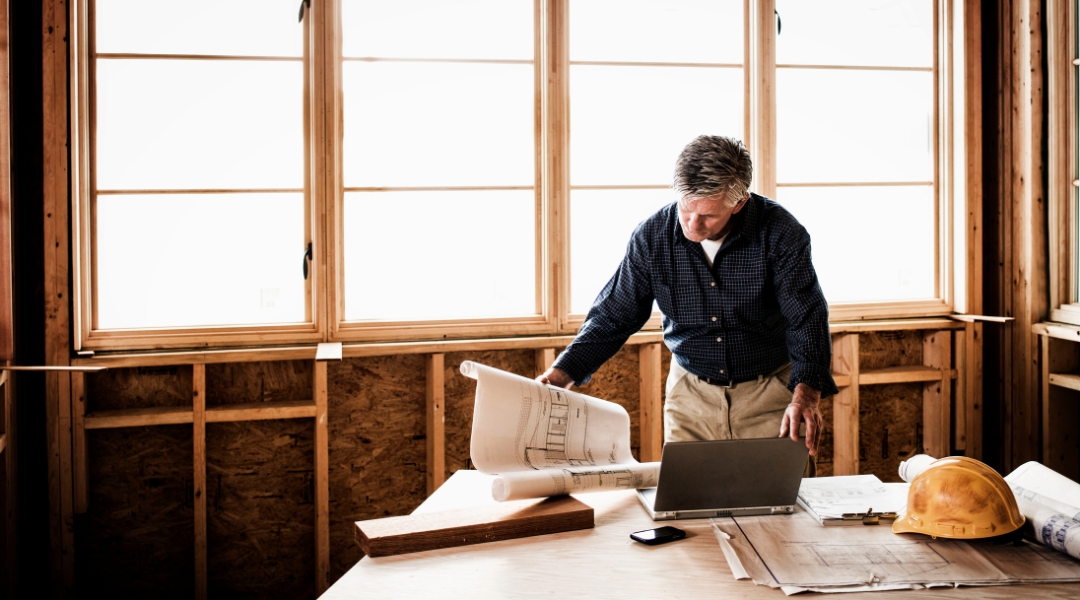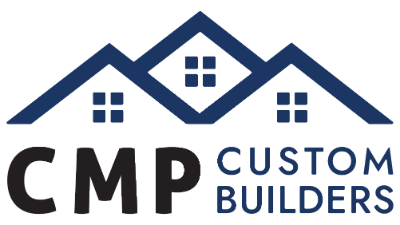How to Build a Custom Home in Utah (6-Step Guide)
Are you dreaming of building your custom home in Utah but feeling overwhelmed? The journey to creating your dream home can be fraught with challenges—from navigating financial planning and securing the perfect lot to choosing the right construction partner. Yet, it represents a unique opportunity to bring your vision to life, tailored to your lifestyle and preferences.
In this article, you’ll learn how to turn the complexities of custom home construction into a seamless and enjoyable experience, all while ensuring your project stays on time and within budget.

Step 1: Vision and Planning
Begin with broad dreams of your ideal home, considering its style, size, and alignment with your lifestyle. This vision becomes the compass for all subsequent decisions, influencing everything from location to the final touches.
Determine Your Budget
Then, set a realistic budget for your custom home. This amount will be the foundation for your entire project. Whether you’ve got $500,000 or over a million to play with, knowing this number upfront is crucial.
But it’s not just about picking a number out of thin air. Chat with a qualified lender to clearly understand what you can afford. This includes understanding the down payment and monthly mortgage you’re comfortable with. It’s all about ensuring your custom home dreams don’t become financial nightmares. By setting a clear budget early, you make sure the rest of the journey is smooth sailing.
Choose the Perfect Plot
Choosing the perfect location for your custom home in Utah isn’t just about the view. It’s about aligning your lifestyle, budget, and future with the plot of land where you’ll lay your foundations.
Think about what matters to you: Proximity to work, quality schools, local amenities, and the overall vibe of the neighborhood. It’s crucial to ensure your dream home’s budget fits the area’s market to avoid overbuilding or underbuilding. Spend time in potential neighborhoods at different times of the day and week, and consider your commute.
This step is very personal because you must find a spot that feels right and avoids potential headaches. First, steer clear of lots that back up to commercial properties or are on busy streets. It’s also smart to chat with potential neighbors. They’re the ones you’ll be borrowing sugar from or waving to every morning.
Lastly, you can ask us for advice when you think you’ve found “the one.” We have an eagle eye for details you might miss, like sneaky power lines or encroaching fences. So you can trust us to help you secure the perfect foundation for your dream home.
Arrange Financing
Financing your custom home involves careful consideration and strategic planning, starting with the ownership of your land. Ideally, owning your land mortgage-free offers significant leverage, allowing you to borrow against its value to kickstart construction.
From here, you usually have these three financing options:
- Conventional Banks: Your bank might be your go-to because you already have a relationship with them, and it’s more convenient to consolidate your debt. However, they come with rigid withdrawal schedules that may not align with your project’s timeline.
- Mortgage Brokers: Mortgage brokers serve as intermediaries, offering access to various lenders. This route can provide more flexible financing options and potentially smoother transitions from construction to permanent mortgages.
- Private Lenders: While more expensive, private lenders can be a viable option if you need additional funds beyond what conventional routes offer, albeit at higher interest rates and fees.
Be prepared for upfront fees, including appraisal, lender, and legal fees. During construction, you’ll make interest-only payments on the amount drawn for the project. The withdrawal schedules differ among financing options, with conventional banks requiring completion of specific stages before releasing funds, whereas mortgage brokers allow for more flexible draws based on construction progress.
Navigate Permits and Paperwork
Securing the proper permits and adhering to paperwork requirements are pivotal steps in your custom home-building journey. This process ensures your project aligns with local building codes and regulations, safeguarding against legal or construction setbacks.
From zoning laws to building codes, understanding the specific prerequisites for your area is crucial. This is a complex step, so you can always contact us with any questions. We’ll guide you through the maze of documentation and compliance so that your dream home transitions from blueprint to reality without unnecessary details.

Step 2: Choose the Right Partner
When building a custom home, you might think the traditional bid process is the way to go. You design your dream house, get bids from builders, and choose the best price, right? Well, it’s time to think again. This process is like a minefield filled with potential budget blowouts and quality compromises. Builders might skimp on materials or use less skilled tradespeople to cut costs, leaving you with a home that’s not up to par.
Instead of playing this guessing game, find a builder early on. Work with them and your architect from the start, setting a clear budget and expectations. This way, you design with a realistic price, avoiding the heartache of falling in love with a design only to find it’s way over budget.
Step 3: Design and Customization
This phase is where your home begins to take shape, not just in form but as a reflection of your personality. This step involves diving deep into what makes your dream home uniquely yours.
Determine Your Style
Immerse yourself in the world of design to solidify your style. Are you drawn to the sleek lines of modern architecture or the warm, inviting spaces of a traditional home? Use platforms like Pinterest and Houzz to gather inspiration. Create mood boards for different areas of your home, pinpointing what captivates you in each image—be it the airy feel of an open-plan layout, the rustic appeal of exposed beams, or the minimalist elegance of floor-to-ceiling windows.
Tailor Your Home to Your Life
With your style direction clear, it’s time to customize. Customizing goes beyond surface choices like paint colors or finishes. It’s about tailoring each space to your life’s rhythms.
If you love to entertain, maybe an expansive kitchen with a flow into the living area is essential. Or perhaps a home office with ample natural light is crucial for your productivity. It’s also the perfect moment to think about future-proofing your home with innovative technology or adaptable designs that can evolve as your needs change.
Collaborate with Experts
A skilled architect will translate your lifestyle and aesthetic preferences into a functional, cohesive design, ensuring that the structure of your home reflects your style and meets your practical needs. An interior designer can then infuse this framework with warmth, character, and comfort, selecting finishes, furnishings, and decor that elevate your home’s interior to match your envisioned lifestyle.
If you need help finding these professionals, we’re here to help. Our extensive network includes highly skilled architects and interior designers who share our commitment to quality, innovation, and customer satisfaction. We can connect you with the right experts to ensure that your home exceeds your expectations.

Step 4: Confirm Your Budget Within Your Team
Have a detailed dialogue with your architect, builder, and interior designer to ensure financial clarity and cohesion throughout your project. This process includes land acquisition, where initial and closing costs are assessed (if you haven’t purchased your plot yet), construction estimates, design and engineering fees, and financing costs, which can affect your overall budget if not planned for early.
Transparent discussions about these costs are essential for maintaining budget awareness and making informed decisions. However, if you partner with us early on, you can skip this step entirely because we’ll handle the intricacies of budget management for you. Our concierge construction approach involves providing you with precise estimates, removing the guesswork and stress of budget confirmations.
Step 5: The Building Process
Now that your team is aligned and your plans are in place, the construction of your dream home begins. This step is where your vision starts to become a reality.
The building process involves several key stages, starting with site preparation and laying the foundation, framing, setting up plumbing and electrical systems, and the final touches of interior and exterior finishes.
Throughout this journey, it’s vital to maintain open communication with your builder to ensure that any adjustments or decisions reflect your vision and budget. Frequent site visits and meetings will keep you connected to the progress of your home and allow you to address any concerns promptly. Remember, this phase is not just about construction; it’s about crafting the space where your future unfolds.

Step 6: Finalizing and Moving In
As construction wraps up, you’ll enter the final phase: Finalizing your home and preparing to move in. This stage includes a thorough walkthrough with your builder to identify any last-minute adjustments or touch-ups, ensuring every detail aligns with your expectations. It’s also the time for final inspections, obtaining occupancy permits, and confirming that your home meets all local building codes and regulations. Once everything is approved, you can begin the exciting process of moving into your new custom home, ready to start making memories in the space crafted specifically for you.
Empowering Your Dream Home Vision with Expert Guidance Every Step of the Way
Building your dream home in Utah, from planning to moving in, is a journey that, with expert guidance, becomes less daunting and more empowering. Choosing a team that aligns with your vision and budget makes each step manageable and straightforward. This approach ensures your home reflects your unique lifestyle, making the building process an enjoyable and memorable part of creating your home. It’s about turning dreams into reality, with every detail tailored to you, guided by professionals every step of the way.
Ready to turn your dream of a custom home into a reality?
Building your dream home in Utah, from planning to moving in, is a journey that, with expert guidance, becomes less daunting and more empowering. Choosing a team that aligns with your vision and budget makes each step manageable and straightforward. This approach ensures your home reflects your unique lifestyle, making the building process an enjoyable and memorable part of creating your home. It’s about turning dreams into reality, with every detail tailored to you, guided by professionals every step of the way.
